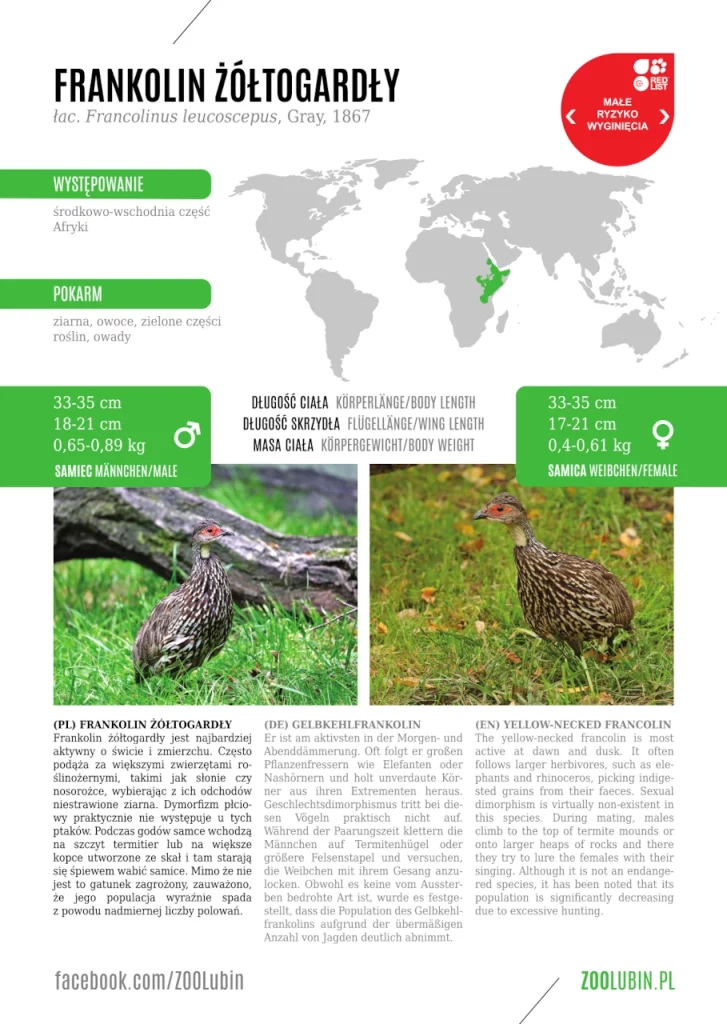
POBIERZ ETYKIETĘ GATUNKOWĄ – PLIK PDF (rozmiar 2782 KB)
Frankolin żółtogardły (PL)
łac. Pternistis leucoscepus, Gray, 1867
Frankolin żółtogardły jest najbardziej aktywny o świcie i zmierzchu. Często podąża za większymi zwierzętami roślinożernymi, takimi jak słonie czy nosorożce, wybierając z ich odchodów niestrawione ziarna. Dymorfizm płciowy praktycznie nie występuje u tych ptaków. Podczas godów samce wchodzą na szczyt termitier lub na większe kopce utworzone ze skał i tam starają się śpiewem wabić samice. Choć nie jest to gatunek zagrożony, zauważono, że jego populacja wyraźnie spada z powodu nadmiernej liczby polowań.
Występowanie: środkowo-wschodnia część Afryki
samiec / samica
Długość ciała: 33–35 cm
Długość skrzydła: 17–21 cm
Masa ciała: 0,65–0,89 kg / 0,4–0,61 kg
Gelbkehlfrankolin (DE)
łac. Pternistis leucoscepus, Gray, 1867
Er ist in der Morgen- und Abenddämmerung am aktivsten. Oft folgt er größeren Pflanzenfressern wie Elefanten oder Nashörnern und holt unverdaute Körner aus ihren Exkrementen heraus. Geschlechtsdimorphismus tritt bei diesen Vögeln praktisch nicht auf. Während der Paarungszeit klettert das Männchen auf Termitenhügel oder größere Felsenstapel und versucht, das Weibchen mit seinem Gesang anzulocken. Obwohl es keine vom Aussterben bedrohte Art ist, wurde es festgestellt, dass die Population des Gelbkehlfrankolins aufgrund der übermäßigen Anzahl an Jagden deutlich abnimmt.
Vorkommen: Mittel-Ostafrika
Männchen / Weibchen
Körperlänge: 33–35 cm
Flügellänge: 17–21 cm
Körpermasse: 0,65–0,89 kg / 0,4–0,61 kg
Yellow-necked francolin (EN)
łac. Pternistis leucoscepus, Gray, 1867
The yellow-necked francolin is active mainly at dawn and dusk. It often follows larger herbivores, such as elephants and rhinoceros, picking undigested grains from their faeces. Sexual dimorphism is virtually non-existent in this species. During the mating season, males climb to the top of termite mounds or onto larger heaps of rocks and try to lure females with their singing. Although it is not an endangered species, it has been noted that its population is significantly decreasing due to excessive hunting.
Distribution: middle-eastern Africa
male / female
body length: 33–35 cm
wing length: 17–21 cm
body mass: 0,65–0,89 kg / 0,4–0,61 kg
